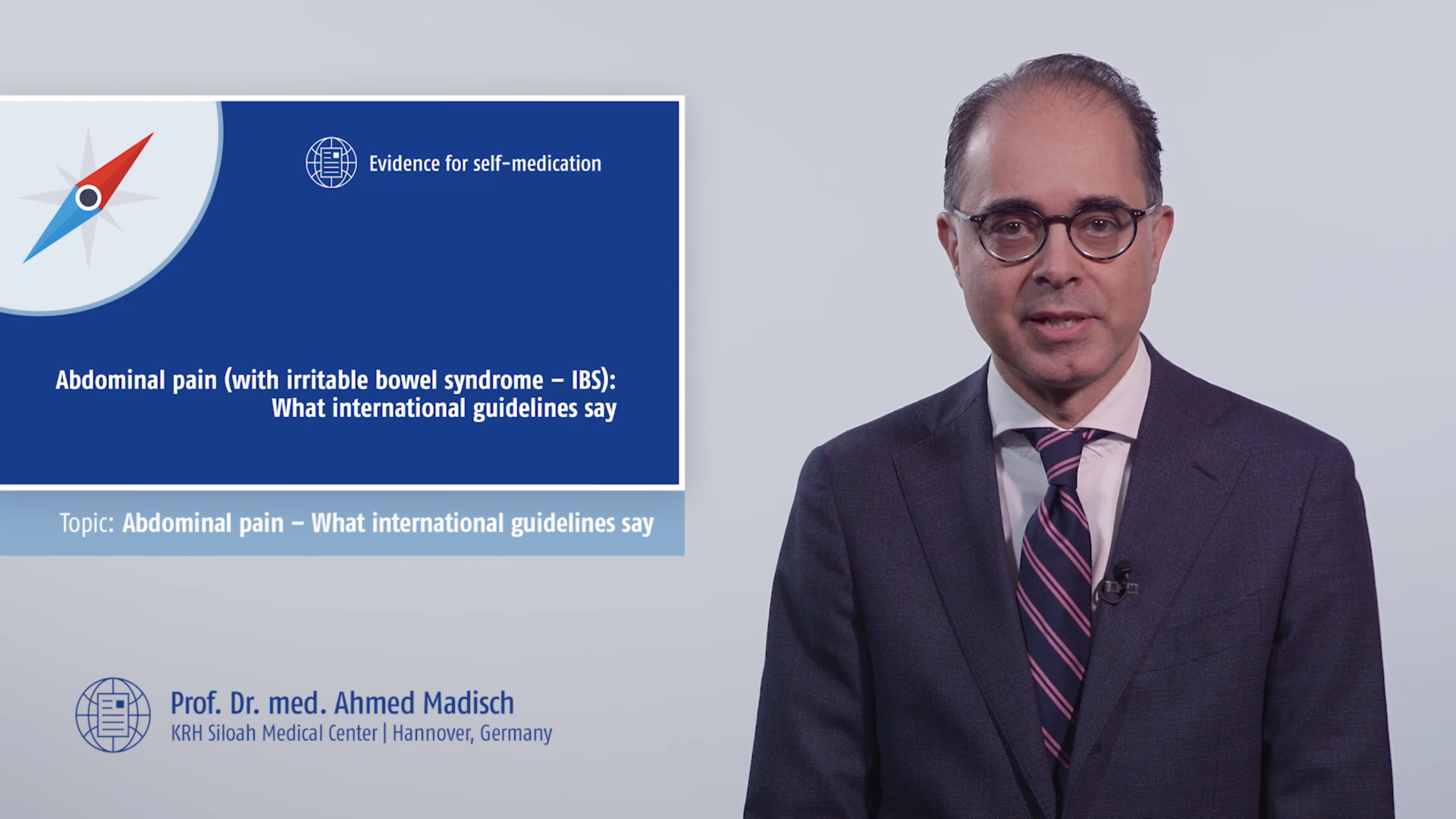Abdominal pain is common and generally has no organic cause (i.e. it is functional abdominal pain). According to current data, about 35% of adults suffer from abdominal pain; one in six is affected on 1–3 days a month and one in fifteen is affected even more frequently than once a week [1].
 Great Britain
Great BritainGuideline recommendations for the treatment of abdominal pain (in irritable bowel syndrome)
Abdominal pain is also the principal symptom of irritable bowel syndrome (IBS). The difference between occasional abdominal pain and that of IBS is firstly the frequency of pain and secondly the simultaneous occurrence of changes in bowel movements. If one focusses on the recommendations for treating pain, then the treatment guidelines therefore also indicate a suitable approach for the treatment of occasional abdominal pain.
A multitude of (national) treatment guidelines now exist for the treatment of IBS. One of the reasons for the high number of guidelines is that not all treatment options are available in all countries and thus “tailor-made” recommendations are important for treatment practice at a local level.
Table: Guideline recommendations for the treatment of abdominal pain in irritable bowel syndrome
| Country | Recommended drugs (selection) | Reference |
| Hongkong | Antispasmodics | [2] |
| USA | Otilonium (bromide), pinaverium (bromide), hyoscine (bromide), cimetropium (bromide), drotaverine, dicyclomine, peppermint oil | [3] |
| Mexico | Mebeverine, trimebutine, butylscopolamine, hyoscyamine, cimetropium (bromide) otilonium (bromide), pinaverium (bromide), alverine (citrate), fenoverine, rociverine, pirenzepine, peppermint oil | [4] |
| Korea | Antispasmodics such as alverine citrate, mebeverine, otilonium (bromide), pinaverium (bromide), peppermint oil, hyoscine (bromide), cimetropium, trimebutine, phloroglucinol | [5] |
| Germany | Antispasmodics such as butylscopolamine (bromide), mebeverine, peppermint oil | [6] |
| Canada | Antispasmodics such as dicyclomine, hyoscine (bromide), pinaverium (bromide), peppermint oil | [7] |
| United Kingdom | Antispasmodics | [8] |
| Poland | Peppermint oil, antispasmodics such as hyoscine (bromide), drotaverine, otilonium (bromide), cimetropium (bromide), pinaverium (bromide), dicyclomine | [9] |
| Spain | Antispasmodics such as otilonium (bromide), hyoscine (bromide), cimetropium (bromide), pinaverium (bromide), dicyclomine (hydrochloride), peppermint oil | [10] |
What can be derived from these treatment guidelines for the relief of occasional abdominal pain?
All the guidelines recommend the use of antispasmodics (also known as spasmolytics) for the treatment of abdominal pain (see Table). In addition to the classic examples such as hyoscine butylbromide1 and drotaverine, these include other drugs such as pinaverium and trimebutine. It should be noted that hyoscine butylbromide is sometimes called butylscopolamine or simply hyoscine or hyoscine bromide. All the guidelines also recommend the use of peppermint oil.
Analgesics in abdominal pain?
It is also instructive what the guidelines do not recommend for treating abdominal pain, namely analgesics such as paracetamol, aspirin or other “minor” analgesics. That is primarily due to the lack of clinical data on efficacy. Secondly, their side effect (gastrointestinal) profile also plays a role: for example, gastrointestinal complaints such as heartburn, nausea, vomiting and abdominal pain are reported as common side effects with aspirin.
Conclusions
Abdominal pain is common, impairs quality of life and can often be successfully treated with antispasmodics such as hyoscine butylbromide, drotaverine or peppermint oil. The various IBS guidelines are consistent in recommending antispasmodics for the treatment of abdominal pain; some of them explicitly recommend hyoscine butylbromide and peppermint oil. In contrast, none of the guidelines recommend analgesics.
1Name used in the Ph.Eur.
Literature
- Palsson et al. Gastroenterology. 2016;150:1481ff.
- Wu et al. Hong Kong Med J. 2017;23:641ff.
- Ford et al. American Journal of Gastroenterology. 2018;113:1ff.
- Carmona-Sánchez. Revista de Gastroenterología de México. 2016;81:149ff.
- Song. J Neurogastroenterol Motil. 2018;24:197ff.
- Layer. Z Gastroenterol. 2011;49:237ff.
- Moayyedi. Journal of the Canadian Association of Gastroenterology. 2019;2:6ff.
- NICE, 2017 https://pathways.nice.org.uk/pathways/irritable-bowel-syndrome-in-adults/managing-irritable-bowel-syndrome#content=view-node%3Anodes-second-line-pharmacological-treatment (accessed 10.02.2020).
- Pietrzak. Gastroenterology Rev. 2018;13:259ff.
- Mearin. Rev Esp Enferm Dig. Madrid. 2016;108:332ff.
Conflict of interest: T. Weiser is an employee of Sanofi.
Disclosure: Medical writing and publication funded by Sanofi Aventis Deutschland GmbH.

